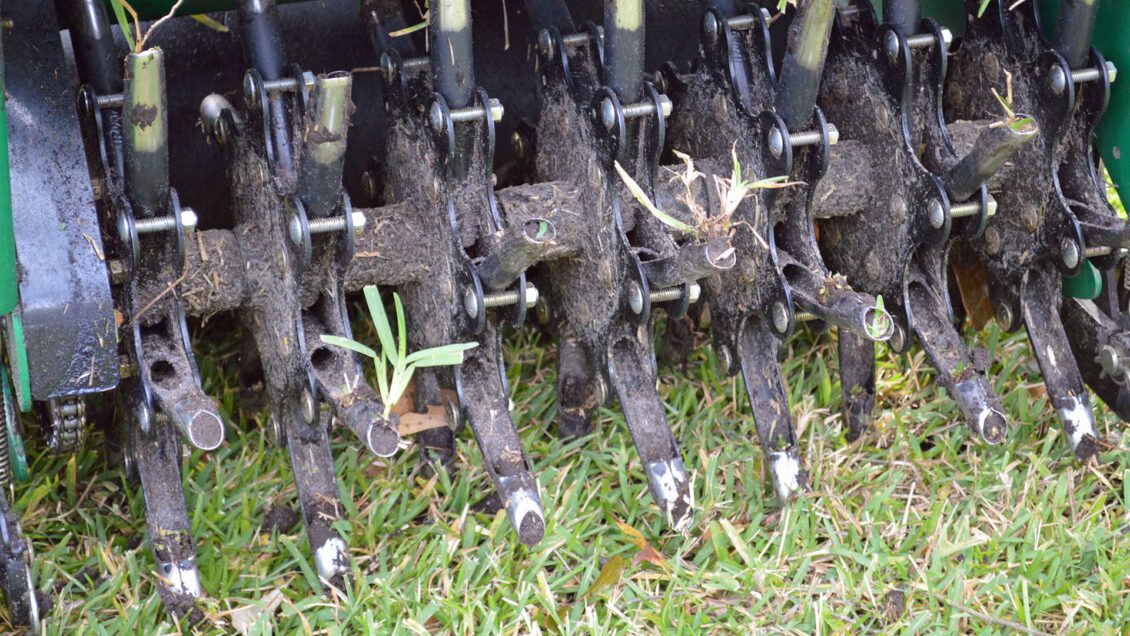
Many homeowners want green, healthy lawns. But keeping grass strong and vibrant can be tricky.
Jackie Jordan, a Clemson Extension area horticulture agent, says soil aeration is key. And now is the time to aerate warm-season grasses.
What is soil aeration?
Soil aeration involves making small holes in the ground to help air, water and nutrients reach the roots. Over time, soil can get hard and packed down, especially in areas with heavy clay.
“When soil is packed down, or compacted, grass struggles to grow,” says Jordan. “Aeration helps loosen the soil, letting roots get oxygen, water and nutrients.”
Core vs. spike aeration
There are two main ways to aerate soil: core aeration and spike aeration.
Core aeration uses a tool to remove small plugs of soil. This leaves holes about 2 to 3 inches deep. Air and water can reach the roots through these holes. The soil plugs left on the lawn will naturally break down.

The spike aeration method uses solid spikes to poke holes in the soil. This can help in the short term, but may cause more soil compaction later.
“Core aeration is better for long-term lawn health,” Jordan advises. “It helps grass grow thicker and stronger.”
When to aerate
In South Carolina, the best time to aerate lawns depends on the type of grass.
Warm-season grasses like Bermuda, centipede, zoysia and St. Augustine should be aerated in late spring or early summer.
Cool-season grasses like fescue need aeration in the fall.
Jordan suggests aerating at least once a year, especially if the lawn sees a lot of foot traffic. Aerate when there is at least four weeks of good growing weather, before cold or hot temperatures set in, to help the plants recover.
Benefits of soil aeration
Aerating a lawn can offer several benefits, including:
- Loosen compacted or packed soil.
- Improve water and nutrient absorption.
- Encourage deeper root growth.
- Reduce thatch buildup.
- Make lawns more drought-resistant.
“A well-aerated lawn is healthier and more resilient,” Jordan said.
Aeration costs and tools
Several options are available for people wanting their lawns aerated. Hiring a lawn care company is one option. Prices vary, so compare costs.
Doing it yourself is another option. Tools can be rented or bought. Renting aeration equipment typically costs about $107 per day.
Manual core aerators are good for small lawns. Larger lawns are best aerated with a power-driven core aerator, which removes soil cores using hollow tubes. These make clean holes and loosen soil faster.
Jordan suggests aerating when the soil is moist, not wet. Make two passes over the lawn, first in one direction, then across.
For more information on lawn care and aeration, visit Clemson Extension’s Home & Garden Information Center.
-END-
Get in touch and we will connect you with the author or another expert.
Or email us at news@clemson.edu
